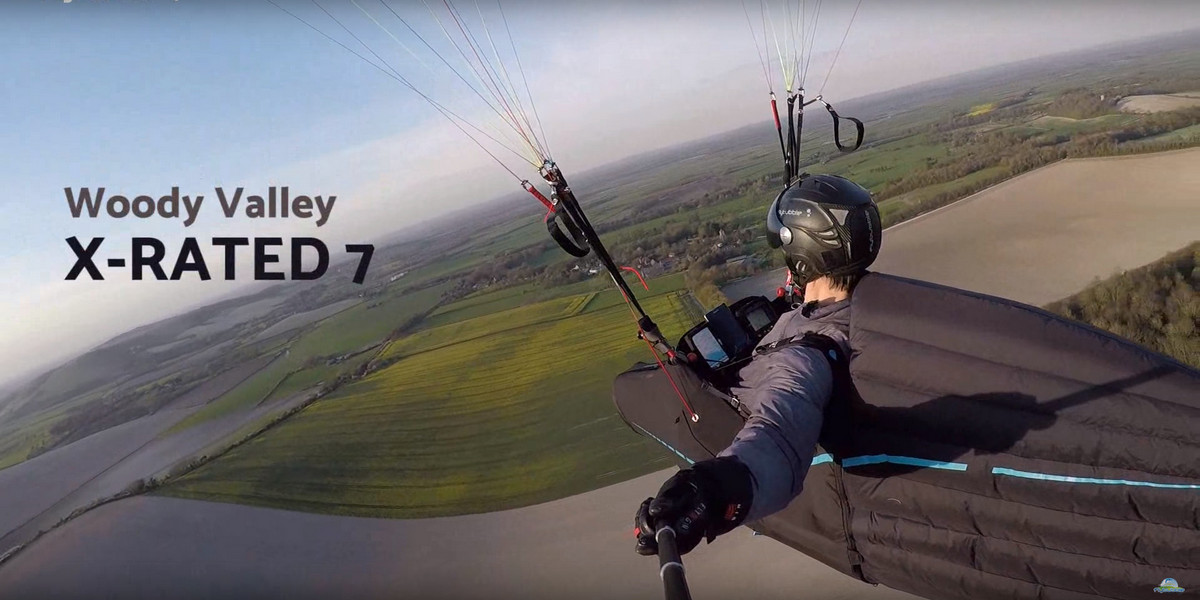
The X-Rated7 (XR7) is Woody Valley's top-of-the-range comp harness. It has 'All the Mod Cons' with many amazing features packed into a surprisingly low weight. The XR7 is very well put together, you can tell just by looking at it that the build quality is exceptional.
Sheer luxury
First of all, looking inside, it has a luxurious coating ... it's like the inside of a luxury car. This is very comfortable, and the back is very firm and supportive, and there's quite a lot of tension across the harness. There's a carbon bar (which runs from the top of the shoulders to the bottom of the seat board) to tension up the harness so you can get it to the right tension you want. It has very supportive sides that keep you solidly in place. In flight it feels extremely comfortable, a harness you can happily fly in for hours.
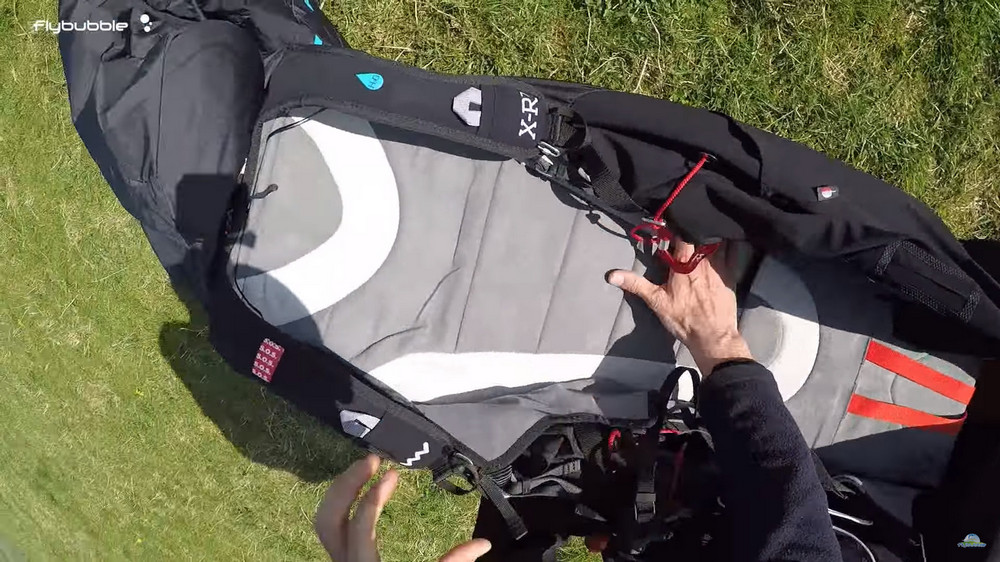
It also has a very generous flight deck, you can easily fit three instruments on there, possibly even four (or a compass). And it's got a zip-off panel here, so this comes off so you can take that away, taking your instruments off so you don't leave them to get squashed.
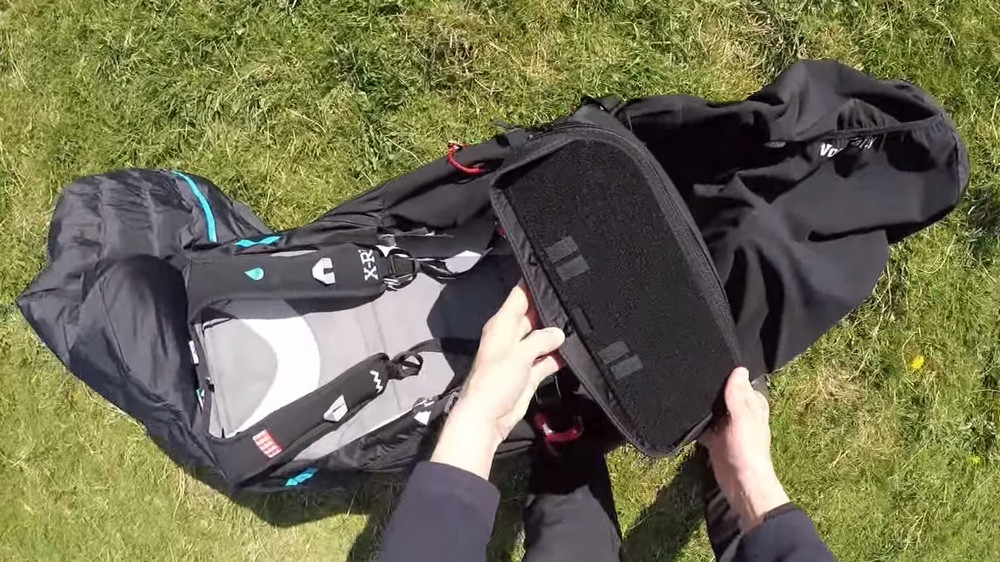
On my flight deck, I've got a Naviter Oudie 4 as my main instrument, my smartphone for communication and I'm usually testing another instrument, in this case the Skytraxx 3.0 I'm trying out and this all fits on very easily. The XR7's flight deck excellent, both on the ground and in the air. It's well positioned and sits at a good angle for viewing.
Fairing, drinks system & storage
The back part of the fairing is just for the aerodynamics, it's like the inside of a paraglider, so it keeps a good pressure, it's very impressive in flight how well it keeps its shape.
There's a hole for the drinks system tube, and a guide that allows you to feed it through to a convenient position.
In the storage area, there's a small pocket on top where you can put your wallet or something like that, and then another deeper pocket below that, then the large main storage area, so you've got lots of space to put things in. You can also easily access the top part of the back protector, that's removable if you wanted to have even more space.
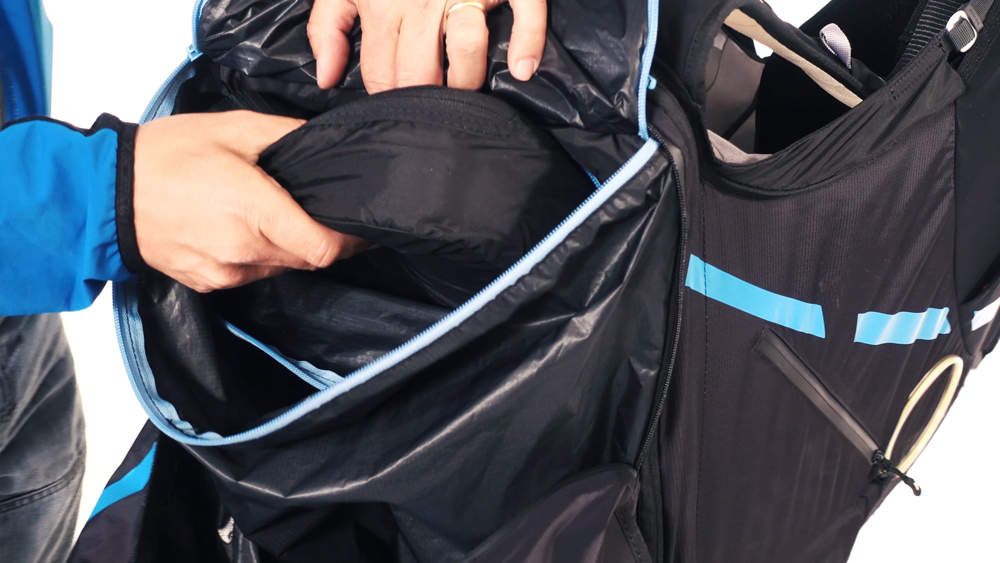
Because it's a bigger harness, it has more volume, you need a bigger rucksack. One I found that fits really nicely is the Supair Trek 160.
Reserve pockets & options
This harness features two reserve pockets under the seat, with exits on either side. The closing system for these is very nicely done, much tidier than some other similar harnesses.
I really like the way Woody Valley have implemented their twin reserve system, very clean and well put together. Great little touches like the bits that tuck in on the reserve handles so your lines won't snag on them. The little reserve handles have bits of hook-and-loop fastening, which is really well done, very sleek and clean but nice and easy to get hold of. A minor niggle is that the zips at the back have a tendency to open a bit; not enough to be a safety issue, but a bit annoying as it means checking and zipping back up to stop debris getting into the reserve compartments.
When I'm clipped in, I do have to reach back a bit to get to the reserve handle, but if I'm thrown over to one side I've got another reserve handle on the other side. Woody Valley show how to install the reserves in their parachute installation video manual.
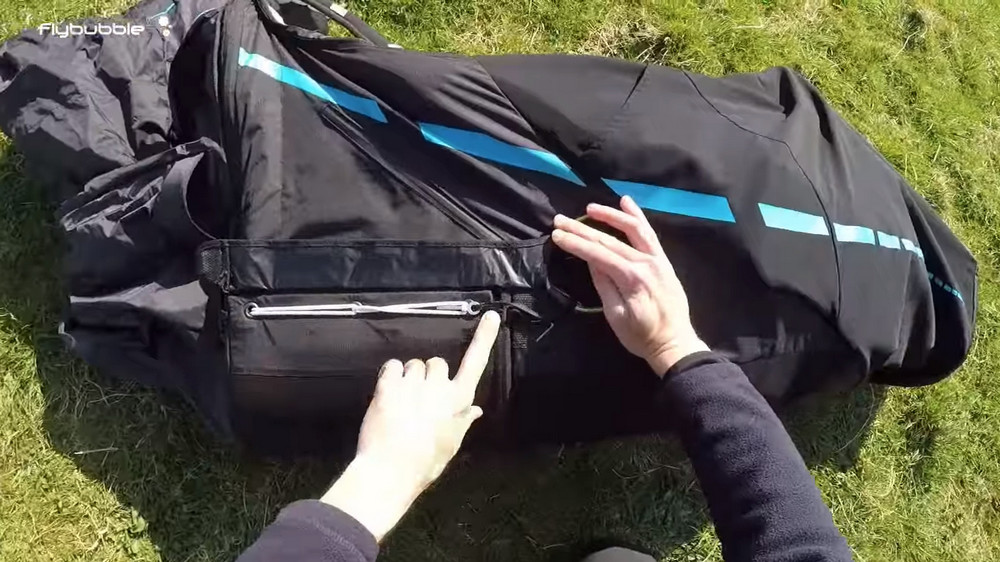
The X-Rated7 can also be adapted to take a front reserve with the optional Front Rescue Container.
On the right side there is a zipped pocket for your drogue chute, for reducing G force when you're doing spiral dives for a descent technique.
On the other side... you've got everything repeated (reserve, drogue chute pocket).
Ballast & other features
Underneath is the exit for the ballast container. When I first saw this harness I struggled to work out how you were going to get the water into the ballast bag, as it's not easily removable. For this you need to purchase a separate ballast bag with a tube and nozzle which you fill with water and connect to the tube on the harness and then squeeze the water from the separate ballast bag into the harness ballast bag. This is demonstrated in Woody Valley's X-Rated7 video manual. I only tried this once and found it a bit fiddly to do, but guess with practice this will get easier.
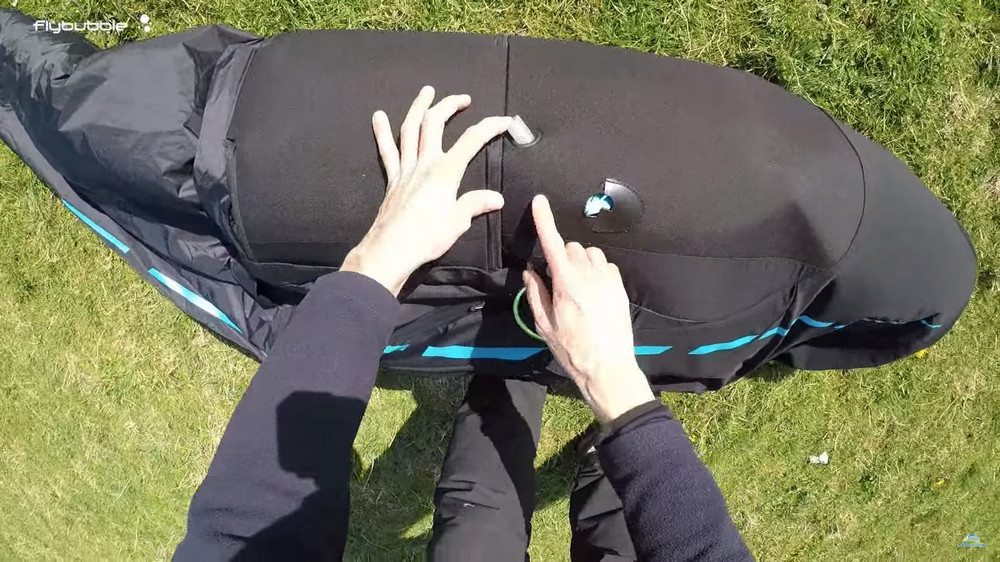
You can see with this harness they've really tried to make it very supportive. They have some rods which I assume might be carbon (I might be wrong but they are quite stiff). These are on the sides to keep the shape of the harness really steady.
The extendable/retractable headrest "for less neck strain over long distances" is a novel feature. I personally didn't find any need for this, but I guess that some might find it useful. Most XR7 owners I quizzed said they didn't use it. One said they used it often, and loved it. Each to their own!
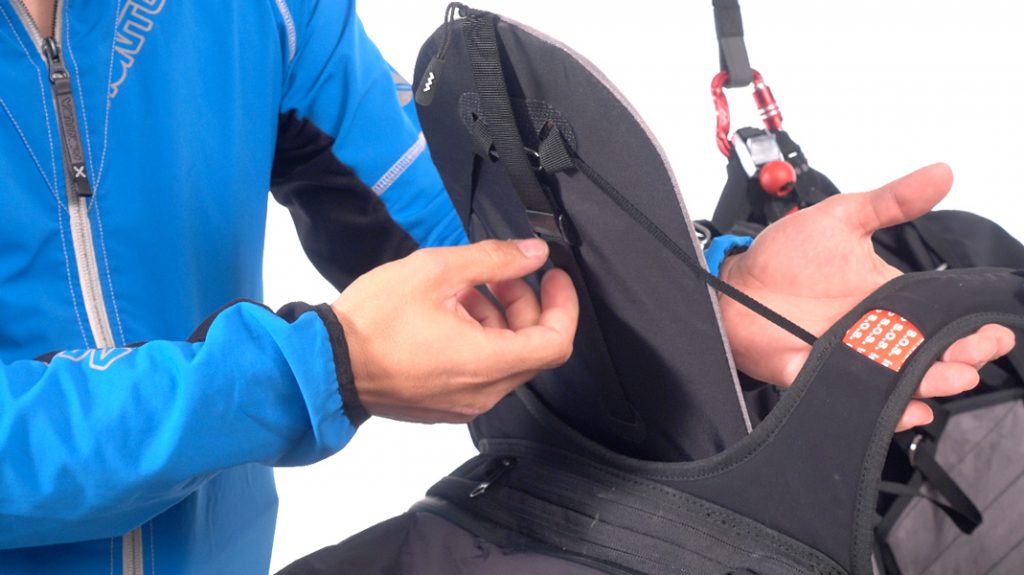
The XR7 comes with Woody Valley's Skyway karabiners, which have been designed specifically for paragliding. These are excellent quality, and the design features seem to work well: I found it easy to attach the wing risers; the slightly angled top means the risers slide to the top; the karabiner stayed in position on the harness webbing, not turning around.
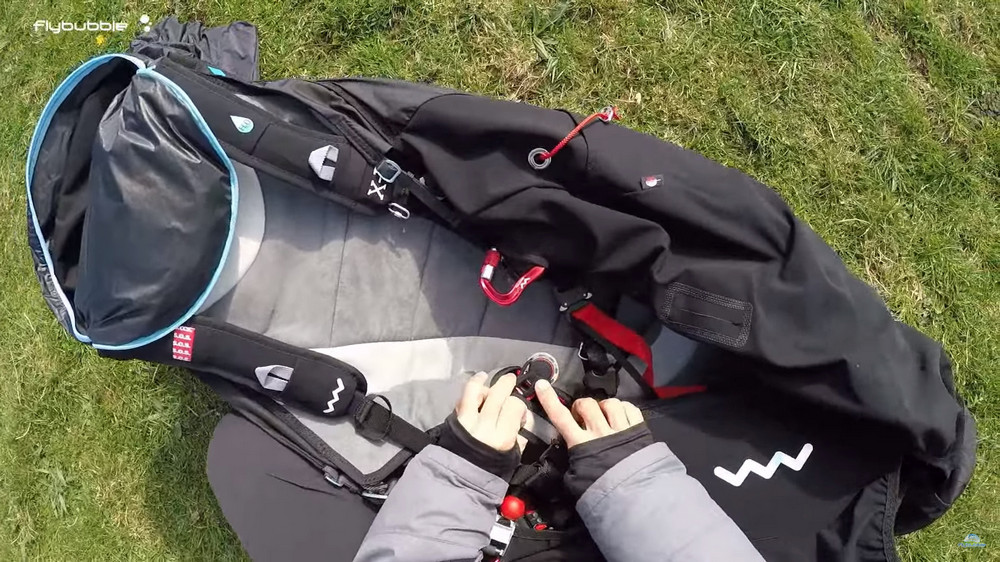
The speed system has 40mm ratchet pulleys and they make a phenomenal difference to the pressure on the speed system, they are very expensive they are about a hundred pounds a pair, so that explains part of the cost of the harness. I would like to add these to any XC or race harness I fly!
X-Rated7 features video
Woody Valley have made a very nice product video showing the features of the X-Rated7, which is well worth watching:
Clipping in
The first straps you must connect when clipping in are for the weight-shift control system (see Adjustable Stabilisation System below). Next, you have your leg straps, you've got to make sure as you pull them up you don't have them twisted round themselves. Next the left flap of the speedbag, finally the flight deck. There's also a loop that goes through the karabiner and last of all, because the flight deck flops down, they've got a clip that attaches it onto the waist strap. As with most race harnesses, there's quite a few steps to clip in, so you need to develop a good routine. With practice it's easy enough.
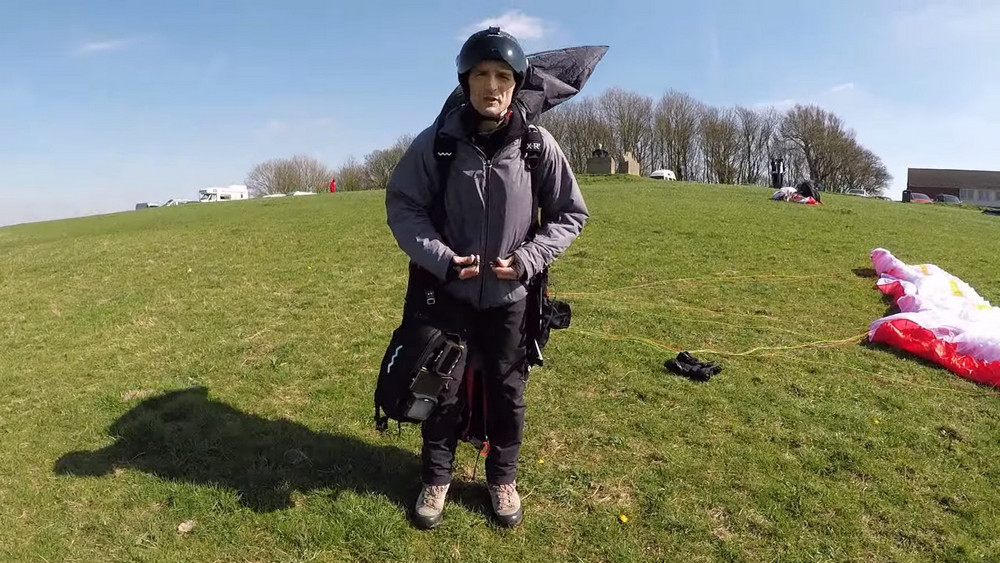
Adjustable Stabilisation System (ASS)
Watching our review video, you might be wondering what the red balls and ratchet strap system near the harness waist strap are for. You might also be wondering why I do up an extra set of cross-bracing straps when I first get into the harness (see clipping in above), which I explain is the "weight shift control system". These are for what Woody Valley call the "Adjustable Stabilisation System". I guess this figures, since Woody Valley have designed this harness to kick ASS!

I did record a video explanation about ASS but the audio didn't come out well (too much wind noise!) so it wasn't included in my video review. I'll explain about it here instead.
ASS allows the pilot to fine-tune the 'sensitivity' (weight shift) of the harness for "better piloting" without changing the waist strap setting.
Leaving your ASS loose (red balls up to the ratchets) makes the harness more 'sensitive' and responsive to weight shift, but also means you get rolled around more in more active conditions.
Tightening your ASS up (red balls pulled in) has the opposite effect.
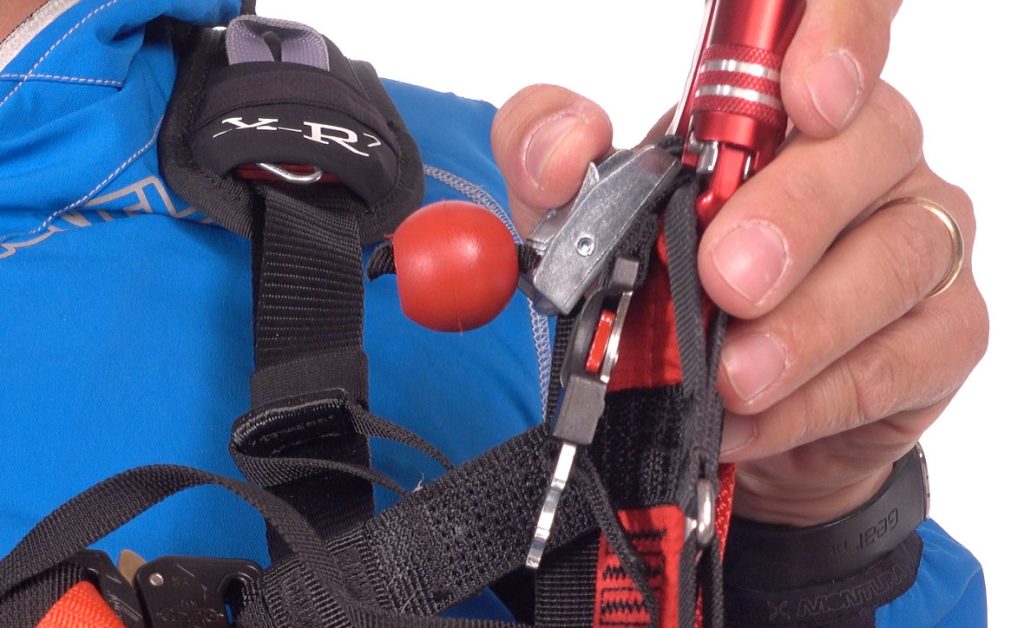
I demonstrate the effect ASS has in the video from 7:49. First I show how the harness reacts to weight shift with a tight ASS; then loose. You can see that the harness has more range of movement (more weight shift) when the ASS is loose. I found the effect of the system on weight shift and stability quite subtle with small adjustments, so I used bigger adjustments to get a more noticeable effect.
Every pilot will have their individual preferences for harness 'sensitivity'. Personally, I quite like my harness to be on the more 'sensitive' side so have found myself flying with my ASS the loosest position all of the time. I suspect that some pilots might prefer a less 'sensitive' feel i.e. a tighter ASS!
Side note: The first harness I saw with this kind of system was Denis Cortella of Kortel Design's Kanibal Race 2 prototype two years ago. As far as I know Woody Valley are the first to implement this kind of system in a production harness, although their system works differently to Denis'.
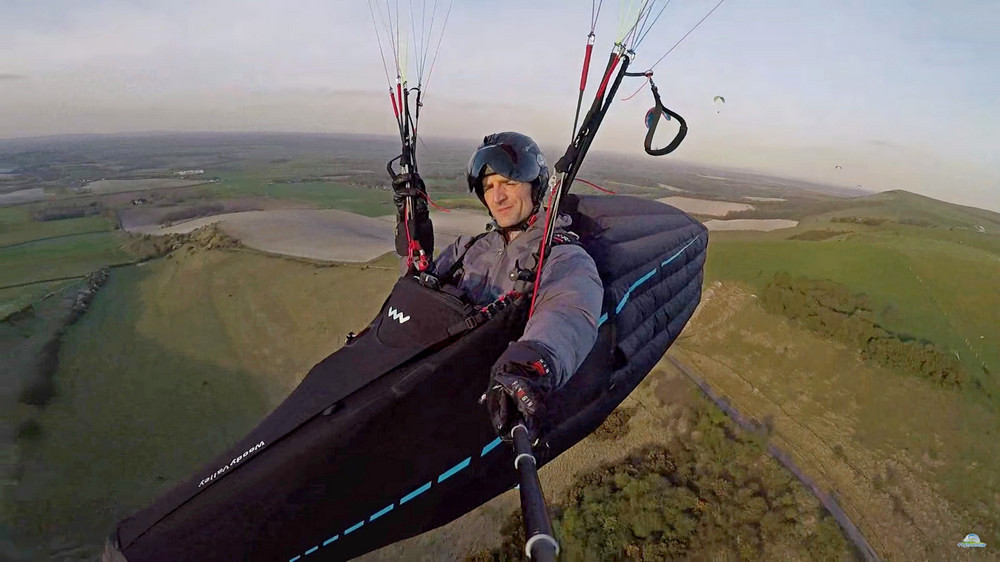
Summary
Considering the wealth of impressive features which adorn the X-Rated7, and its excellent build quality, the weight is impressive. Although heavier and bulkier than most XC pod harnesses, the XR7 is lighter and feels less restrictive to movement on the ground than some other race harnesses. Pilots changing up from a lightweight XC pod to the XR7 will certainly notice the increased weight and bulk, especially when ground handling and packing (similar to any race harness) so will need to allow for and adapt to this. In the air the connection with the wing is excellent, slightly dampened, and gives a very comfortable ride. The shape is very aerodynamic, and the harness is very clean all round. The speed system is light and smooth, encouraging use!
The X-Rated7 is of excellent quality, supremely comfortable in the air, highly aerodynamic, looks fantastic and built to last.
More about the Woody Valley X-Rated7
Carlo is 6 ft (183 cm) tall, weighs 78 kg naked, and is of slim build. He tested a Woody Valley X-Rated7 size L here.
Bonus X-Rated7 review by Remi Pickett
Flybubble team pilot Remi Pickett took delivery of a X-Rated7 from us earlier this year. Having flown in it a good amount in a wide variety of conditions (everything from peachy evening soaring, through banging XC days in the UK to head-banging competition racing in Saint-Andre-les-Alpes, France) he's got to know it well.
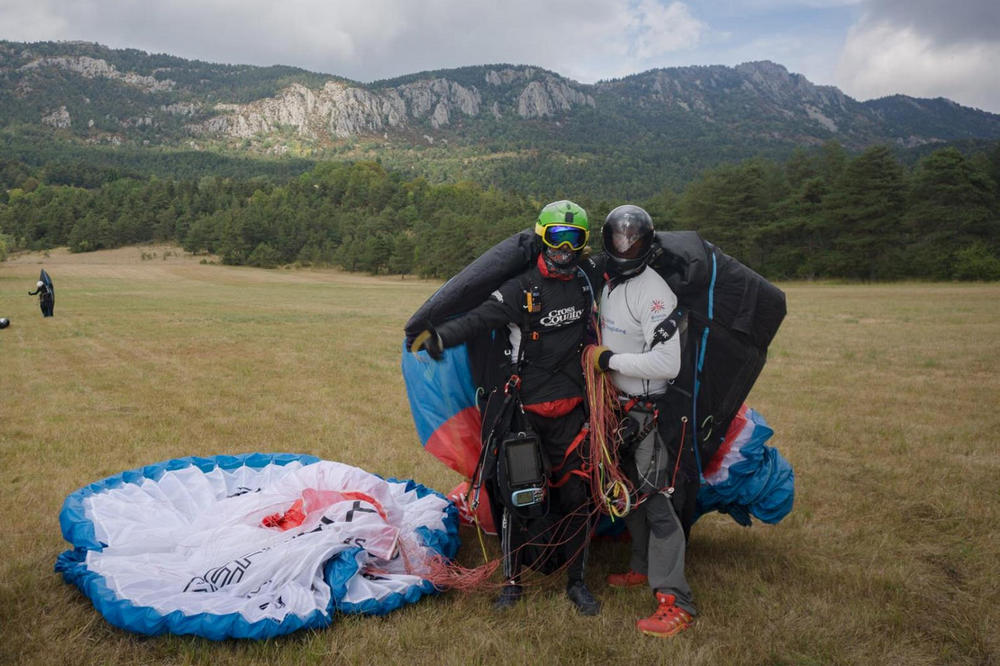
Remi says: "The Woody Valley XR7 at first sight is incredibly well made both in material choice and workmanship. There is enough space in back to allow room for everything I needed to carry for competition flying.
On the ground once clipped in there was definitely restricted movement as the seat pushes into the back of the legs. Carrying 3 L of ballast and 3 L of drinking water doesn't help with general mobility on the ground.
Once in the air though I am instantly aware of just how comfortable it is, everything feels great, the pitch the roll, and desensitized enough to take the violent jolts out of very rough flying conditions on a two line glider (Ozone Zeno).
The reserve container unzips itself slightly, and needs to be checked each time before taking off. I don't think this is a safety issue, but still annoying.
The three-step speed system works well.
The flight deck positioning is perfect and I can see my instruments easily.
Overall I am very impressed with the harness, despite those small niggles I've mentioned."
More about the Woody Valley X-Rated7
Want to see more? There’s no better way to support our efforts than buying from us. We’ll ensure you get great service! Choose from our huge range AND enable us to produce more videos and articles to benefit the freeflight community.

